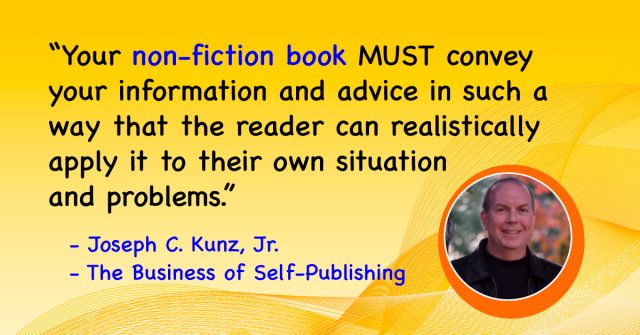Podcast: Play in new window | Download
Subscribe: Apple Podcasts | Spotify | Pandora | RSS | More
Updated December 26, 2022
Subtitle
If you cannot explain the benefits and features of your book, the readers will not buy it
Synopsis
One of the biggest marketing mistakes we non-fiction authors can make is confusing the benefits and features that readers will get if they buy our book. And at first glance, it might seem a little challenging to understand the differences – especially if you’re writing a book for the first time. So, here is a quick explanation to help you understand the fundamental differences between a book’s benefits and features.

What You Will Learn
1. You will learn how to define your book’s benefits.
2. You will learn how to define your book’s features.
3. You will learn how and why benefits and features work together to help you sell more books.
Introduction
One of the biggest marketing mistakes we non-fiction authors can make is confusing the benefits and features that readers will get if they buy our book. And at first glance, it might seem a little challenging to understand the differences – especially if you’re writing a book for the first time.
And, if you, the author, don’t understand how to explain the benefits and features of your book, the reader/buyer will undoubtedly be confused – which means they won’t buy your book.

So, here is a quick explanation to help you understand the fundamental differences between a book’s benefits and features.
A. What Are Benefits?
Benefits are what the readers will get out of reading your non-fiction book. In other words, the end results from reading your book. Think about a product (your book) that produces beneficial results that promote a person’s (the reader’s) well-being. Your book’s benefits are the value the readers will receive by applying your advice to their problems.
Your book MUST convey your information and advice so the reader can apply it to their situation and problems. If they can do this, they will view your book as a significant value. The readers will consider the MONEY they paid for your book and the TIME they invested as well spent, but only if they benefited from reading it.
Some common examples of a non-fiction book’s benefits:
1. They will learn specific steps to solve a problem that they want to fix (the main reason that they bought your book in the first place)
2. They will learn how you, the author, fixed your own problems
3. They will learn how other people with the same problem fixed it and improved their lives, careers, relationships, business, etc.
4. Spend less time on problem-solving, and more time on making money
5. Learn how to lose 30 pounds in 30 days
6. Learn how to get five more clients in the next 30 days
7. Learn how to turn your hobby into a profitable business
8. How to fix your failing business, marriage, partnership, career, etc.
9. How to start a new business
10. How to help a family member that has Alzheimer’s disease
Obviously, this list could go on forever. But you get the idea. And now you can easily define what your book’s benefits are – or should be.

B. What Are Features?
Features are the things that your non-fiction book has in it. In other words, your book’s attributes, design, and appearance. Think about a product’s (your book) structure and appearance that a reader (buyer) can look at and compare to other books.
Your book’s features can go a long way to helping a book buyer choose your book over all the others. Your book’s features can and should, if appropriately developed, give you a competitive advantage over other books covering the same subject matter. They can help differentiate your book from the others.
Some common examples of a non-fiction book’s features:
1. Interviews
2. Checklists
3. Annotated bibliography
4. Large print
5. A famous person wrote the foreword
6. Lots of graphs and graphics
7. Questionnaires
8. Many real-world examples
9. Charts
10. Images
Obviously, this list could go on forever. But you get the idea. And now you can easily define your book’s features – or should be.

Conclusion
Benefits and Features Work Together to Help You Sell More Books
To create an excellent book that genuinely helps readers fix their problems, you MUST understand that a book’s benefits and features work together hand-in-hand. If your book’s features are well thought out and well presented, they will do their job and help your readers reap the benefits you are trying to help them achieve.
Helping the reader is – and should be – the main reason that you wrote your book in the first place. If it’s not, you and your book will not help anyone – and your long-term sales will suffer. As a reminder, book sales that go on and on for the long term are what it’s all about for successful self-publishing.
Questions to Think About
1. What is the main benefit you are trying to help your readers achieve from reading your book?
2. Can you list a few of the main features of your book and how they will help and support your book’s main benefit so that your readers can solve their problems and personally benefit from reading it?


